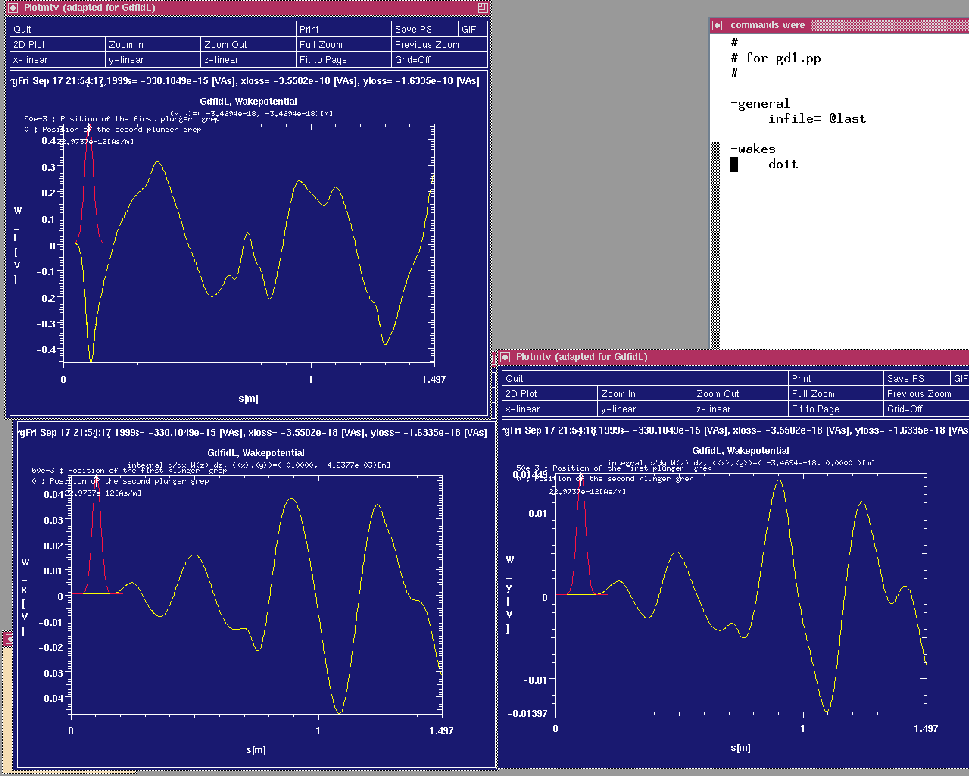Next: Wakepotentials in the plane
Up: Analysing the results with
Previous: Looking at the wakefields
We enter the section -wakes. When we are solely interested in the
longitudinal and transverse wakepotentials at the position
of the line-charge, we do not have to specify any special option,
the default values are good for that.
The default is to compute and plot the longitudinal and transverse
wakepotentials at the position of the exciting charge.
We say
-wakes
doit
The resulting plots are shown in figure 10.4.
Figure 10.4:
Screenshot of the desktop when we just said 'doit' in the section '-wakes'.
gd1.pp has popped up three instances of mymtv2 that show the longitudinal
and transverse wakepotentials at the (x,y) position of the line-charge.
The yellow curves are the wakepotentials, and the red curve is the
charge density of the line-charge.
 |
We look at the longitudinal wakepotential as a function of (x,y)
at the s-positions s=0.9m and s=1.1m by specifying
watsi= 0.9
watsi= 1.1
watq= no
doit
the watq= no
instructs gd1.pp that we do not want to see again the
wakepotentials at the position of the linecharge.
We did specify watsi= ?? twice, this means, that we want to see
the wakepotential at both s-coordinates.
The resulting plots are shown in figure 10.5.
Figure 10.5:
Screenshot of the desktop showing the longitudinal wakepotential
in the cross section of the beam-pipe where a beam can travel.
 |
Subsections
Next: Wakepotentials in the plane
Up: Analysing the results with
Previous: Looking at the wakefields


